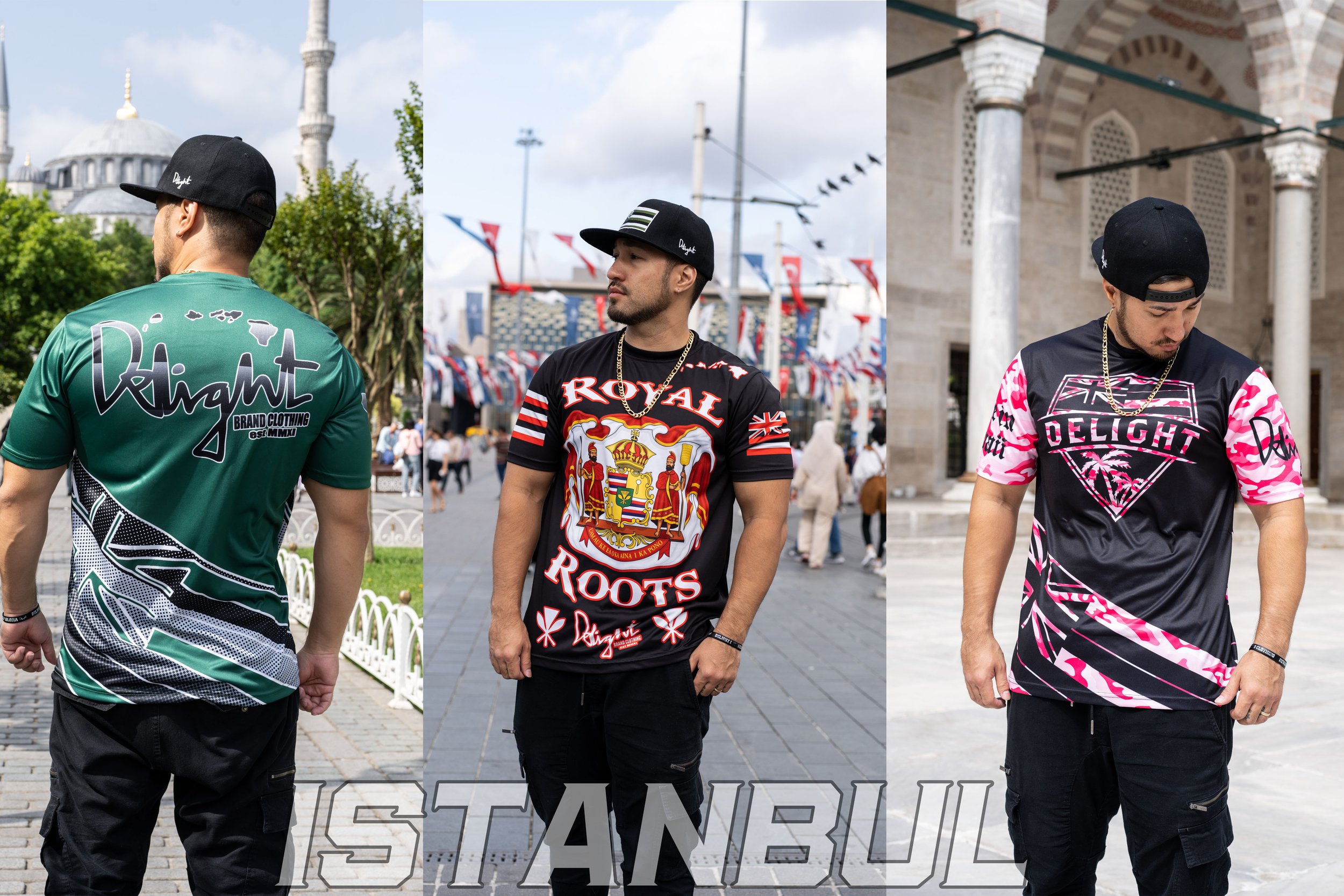Branded Clothing for Cold Climates: Which Fabrics Actually Work?
Branded Clothing for Cold Climates: Which Fabrics Actually Work?
Blog Article
The Significance of Sustainable Garments: Exactly How It Affects the Atmosphere and Your Closet
Lasting clothes is significantly recognized for its vital function in decreasing the environmental effect of the fast apparel industry. By concentrating on green products and ethical production approaches, it deals with pressing environmental issues. This change not just benefits the planet however also affects consumer selections, leading to a much more thoughtful method to wardrobe monitoring. Comprehending these dynamics raises necessary inquiries regarding style's future and individual obligation in forming it.
The Ecological Footprint of Rapid Fashion

Benefits of Lasting Products
Lasting materials offer substantial benefits, specifically via eco-friendly textile selections that lessen ecological harm. These materials likewise demonstrate durability and longevity, decreasing the need for regular substitutes. Therefore, they add to a much more sustainable garment industry and promote liable consumer behavior.
Eco-Friendly Fabric Choices
While the style market has long been related to quick fads and environmental harm, the rise of green fabric selections provides a transformative possibility. Sustainable materials such as organic cotton, hemp, and Tencel have actually obtained popularity because of their lower eco-friendly effect. These fabrics are often generated without dangerous pesticides and require less water, decreasing their carbon footprint - Branded Clothing. In addition, numerous eco-friendly textiles are biodegradable, adding to a round economy by reducing waste. Picking sustainable materials not just sustains environmentally responsible methods however additionally advertises much healthier communities. As consumers come to be a lot more knowledgeable about their purchasing power, the demand for environmentally friendly fabrics motivates brand names to introduce and take on even more lasting production approaches, ultimately benefiting the earth and future generations
Longevity and Long Life Advantages
Numerous customers are increasingly identifying the durability and longevity benefits of lasting products in their clothing selections. Unlike standard materials, sustainable products such as organic cotton, hemp, and recycled polyester are engineered to withstand wear and tear, causing garments that last much longer. This decreased regularity of replacement not just conserves customers cash in time yet additionally diminishes waste generated by fast fashion. Additionally, sustainable clothes commonly uses environmentally friendly production approaches that improve material strength, adding to a decrease in the general carbon footprint. By purchasing durable garments, customers can cultivate a much more sustainable closet while delighting in high-quality items that maintain their visual and capability with time. Subsequently, longevity and long life stand as vital benefits of choosing lasting products.
Reducing Waste Via Sustainable Practices
Lowering waste in the fashion sector can be achieved via innovative techniques such as upcycling and repurposing materials. In addition, embracing minimal wardrobe methods urges consumers to focus on quality over quantity, inevitably decreasing apparel consumption. With each other, these methods add substantially to an extra sustainable garments version.
Upcycling and Repurposing Products
Upcycling and repurposing products have actually become innovative approaches in the garment industry, transforming discarded fabrics right into important new items. This strategy not just minimizes waste but also motivates creative thinking and individuality in clothes design. By taking old garments and products, developers can create one-of-a-kind items that mirror individual style while lowering the demand for brand-new sources. In addition, upcycling commonly requires less energy and water contrasted to typical manufacturing processes, substantially decreasing the environmental footprint of style. As customers end up being a lot more familiar with sustainability, the popularity of upcycled clothes remains to climb, promoting a circular economy. Ultimately, these methods add to a more sustainable future, where style focuses on ecological health and wellness over quick manufacturing and usage.

Minimal Closet Strategies
As individuals increasingly seek to minimize their environmental influence, taking on minimal closet methods has actually gotten traction as an efficient technique to sustainable fashion. These methods stress top quality over amount, motivating customers to curate a smaller collection of flexible, sturdy clothing. By focusing on timeless items that can be mixed and matched, individuals can decrease the frequency of acquisitions and ultimately reduce waste.Additionally, minimalism advertises mindful consumption, prompting buyers to reflect on the environmental and honest effects of their options. This approach not only fosters an extra lasting lifestyle but additionally simplifies daily decision-making pertaining to clothes. As individuals accept minimal principles, they add to a style society that values sustainability and responsible consumerism, ultimately leading to a more eco-conscious society.
The Role of Honest Labor in Lasting Fashion
While lots of customers are increasingly knowledgeable about the environmental consequences of their clothing choices, the relevance of ethical labor methods in lasting style can not be ignored. Moral labor incorporates fair salaries, safe working conditions, and respect for employees' rights, forming the foundation of accountable style manufacturing. Brands that prioritize honest labor not just boost neighborhoods yet also set a criterion for responsibility in the industry.Moreover, the assimilation of honest techniques fosters transparency, allowing customers to make educated selections concerning their purchases. This method contrasts greatly with quick fashion's exploitative labor designs, which frequently prioritize revenue over individuals. By sustaining firms committed to honest labor, customers add to a system that values human self-respect alongside environmental sustainability. Ethical labor is not just an add-on; it is essential to the broader goal of lasting fashion, guaranteeing that the quest for eco-friendliness does not come at the expenditure of human legal rights.
The Effect of Sustainable Clothing on Carbon Emissions
Lasting apparel has the possible to significantly lower carbon emissions connected with the fashion business. Conventional garment production adds significantly to greenhouse gas emissions, largely because of energy-intensive production processes and the use of non-renewable sources. In comparison, sustainable style concentrates on environment-friendly materials, such as organic cotton or recycled fibers, which usually need less power to produce.Moreover, sustainable brands tend to take on much more reliable manufacturing techniques, lessening waste and lowering total discharges. By prioritizing sturdiness and ageless style, sustainable apparel motivates customers to get much less frequently, more minimizing the carbon footprint related to overconsumption.Additionally, lots of sustainable brand names are dedicated to transparency in their supply chains, allowing customers to make enlightened options that line up with their values. Inevitably, changing in the direction of lasting garments can cause a significant reduction in carbon emissions, adding to a healthier planet and a much more lasting future for the apparel see this page industry.
Supporting Regional Economies With Sustainable Selections
The shift towards lasting apparel not only addresses environmental worries but likewise considerably benefits local economic climates. By selecting lasting style, customers typically sustain local artisans and small companies, enhancing community resilience. These enterprises typically operate on a smaller scale, prioritizing workmanship and moral techniques over mass production.Investing in locally made lasting garments cultivates work production and boosts financial development within neighborhoods. As consumers end up being a lot more conscious of the ecological impact of their purchases, they significantly seek products that mirror their worths. This need motivates local manufacturers to take on lasting methods, contributing to a circular economy.Moreover, sustaining regional businesses lowers transport discharges, straightening with eco-conscious customer habits. The interconnectedness of sustainable clothing and neighborhood economic situations emphasizes the crucial duty that specific options play in promoting both environmental and economic wellness. By promoting these regional links, neighborhoods can flourish while additionally functioning towards an extra lasting future.
Transforming Your Storage Room: Tips for a Sustainable Closet
As people seek to lower their environmental impact, transforming a storage room into a sustainable wardrobe becomes a vital step. One efficient technique is to review existing clothing, maintaining only things that are used frequently which line up with sustainability objectives. Prioritizing top quality over quantity is important; buying long lasting items from green brands can substantially decrease waste.Additionally, incorporating second-hand products can take a breath new life right into a wardrobe while reducing ecological damages. Organizing clothes swaps with pals or contributing extra things can better advertise sustainability.When shopping, individuals should seek products that are natural, recycled, or eco-friendly, and avoid fast style retailers - Branded Clothing. Ultimately, exercising mindful consumption by thoughtfully thinking about each purchase can add to an extra sustainable way of life. By carrying out these tips, one can create a wardrobe that reflects personal design while supporting environmental stewardship
Regularly Asked Inquiries
How Can I Identify Sustainable Clothing Brands?
To identify sustainable clothing brands, one should look into products made use of, examine for accreditations like Fair Profession, and examine the brand's openness concerning their manufacturing procedures, labor methods, and ecological effect, making sure moral and eco-friendly methods are prioritized.
What Are the Prices Connected With Lasting Fashion?
The costs related to lasting fashion can vary considerably. Higher production costs, moral sourcing, and environmentally friendly products typically bring about increased retail rates, which may deter some consumers while interesting environmentally conscious shoppers.
Can Lasting Garments Be Fashionable and fashionable?
Lasting garments can indeed be trendy and fashionable. Developers significantly prioritize innovative products and honest production methods, showing that style and sustainability can exist side-by-side. Customers currently have varied choices that mix looks with ecological awareness.
Exactly How Does Laundering Clothes Affect Their Sustainability?
Cleaning clothes greatly effects sustainability by consuming water and power, adding to contamination, and triggering microplastic release. Constant cleaning can deteriorate materials, shortening their life expectancy and increasing the demand for replacements, eventually aggravating ecological issues.
What Is the Lifespan of Sustainable Clothes Contrasted to Quick Style?
The lifespan of lasting clothes typically surpasses that of rapid style items, typically long lasting a number of years as a result of top quality materials Click This Link and craftsmanship. On the other hand, rapid fashion garments might deteriorate swiftly, requiring more regular replacements. Lasting clothing is increasingly recognized for its important role in lessening the environmental effect of the fast style market. While numerous customers are progressively mindful of the ecological repercussions of their garments choices, the significance of moral labor techniques in sustainable style can not be neglected. Branded Clothing. Sustainable clothes has the potential to greatly minimize carbon emissions associated with the fashion industry. In contrast, sustainable style focuses on environmentally friendly products, such as natural cotton or recycled fibers, which usually need much less energy to produce.Moreover, sustainable brands have a tendency to embrace a lot more reliable manufacturing techniques, reducing waste and decreasing general useful reference exhausts. By focusing on durability and timeless style, lasting garments urges customers to acquire much less regularly, further reducing the carbon footprint linked with overconsumption.Additionally, lots of sustainable brands are dedicated to transparency in their supply chains, enabling consumers to make informed options that line up with their worths
Report this page